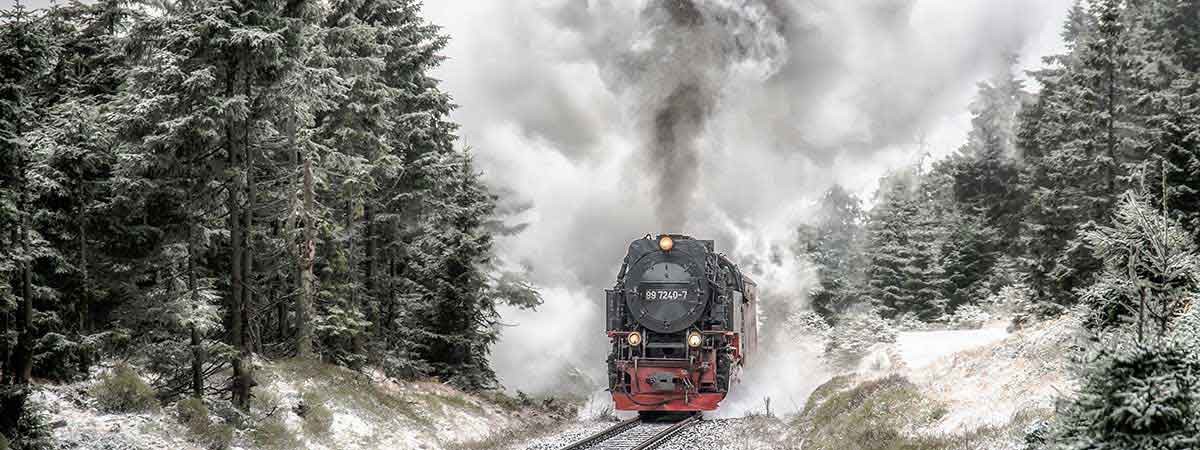If a vehicle's drive stops working, it is not possible to move forward. This may be annoying, but usually not dangerous. If the brakes are faulty, on the other hand, all the alarm bells need to ring straightaway, since to a certain extent, the brakes are the most important part of any vehicle. This is particularly true for trains, which may carry many hundreds of passengers.
From handbrakes to modern stop technology
At the beginning of the 19th century, the first railways were braked by hand and for each car. Over time, centrally controlled braking systems became established, operating over the entire length of the train. Back then vacuum brakes were common, while compressed air is primarily used today.The two braking processes are in principle very similar: brake pistons on the wheel axles are actuated by brake cylinders. The cylinders are connected to the control unit by lines leading from the traction unit to the end of the train. The train driver actuates a valve to initiate braking. In the case of compressed air brakes, overpressure is led into the brake lines, which comes from a compressor and supplies the energy for the braking process. In the case of vacuum or suction air brakes, the valve serves to reduce an existing negative pressure. It keeps the brake pistons away from the axles during travel. When the valve is actuated, the incoming atmospheric pressure can apply pressure and initiate braking.
Advantages of vacuum brakes
Compressed air brakes do have a disadvantage in terms of the design: they need to compress ambient air for the braking process. During cold weather, the moisture in the air can condense. This leads to a drop in pressure and thus to a reduction in braking performance. If the weather is really icy, the condensation can freeze and clog the brake lines.This danger does not exist with vacuum brakes. To make them ready for operation, the vacuum pump builds up vacuum in the brake lines after switching on the control unit. This prevents moisture from entering the brake system from the outside. A differential pressure of about 690 millibar between the brake system and atmospheric pressure keeps the brakes in the release position. Braking is triggered when the train driver opens the valve. This also happens automatically in the event of a system fault.
This ensures operational safety, and not only at sub-zero temperatures. In addition, vacuum brake systems can be easily regulated. They retain their full effectiveness even after repeated actuation in quick succession – important advantages for operation on long downhill stretches and when manoeuvering. Vacuum braking systems are therefore still in use today, for example on many narrow-gauge and small trains, diesel locomotives for manoeuvering operations or tunnel construction, mountain trains in Switzerland and Austria as well as in trains from the South African and Indian railway networks.
